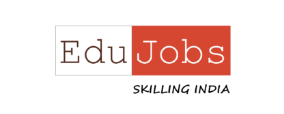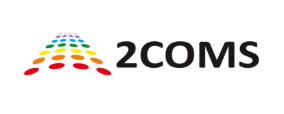The nursing profession features 100+ specializations and constitute two-thirds of the health workforce for India. It is essential for nurses to acknowledge their own evolution since the last decade!
Evolution of Nursing as a Profession
Nursing isn’t just a job; it is a profession that features 100+ specializations. The nursing profession is constantly evolving owing to new approaches, technology and medicines demand skilled nurses.
If you are passionate about improving people's health & supporting the nation's health and wellbeing, nursing is the right profession for you!

Background of Nursing Workforce in India
There are some interesting numbers related to nurses in India.
- Nurses constitute two-thirds of health workforce in the country and are connected to the prevention, treatment, care and rehab of patients
- Nursing today has undergone several changes as they have widened their scope of work, but the development of the vocation in terms of selection and recruitment, suffer from issues.
- Currently India includes 0.7 doctors and 1.7 nurses per thousand population, way below the global average.
- India is ranked 67th against 133 developing countries in number of doctors and 75th in number of nurses. The Physician Nurse ratio is 1:1 whereas the global ratio is that of 1:3.
- Indian needs 2.4 million nurses to attend to rising healthcare needs as per the FICCI report, 2016, a whopping number considering that we bore the brunt during the pandemic itself!
Nursing Education in India – A historical perspective
Formalized nursing was absent in the 17th century while military nursing was the earliest type of the vocation started by the Portuguese. Florence Nightingale was the pathbreaker for the nursing vocation with wide-scale reforms in military and civilian hospitals introduced in 1861. The first hospital to train women as nurses was in St. Stevens Hospital at Delhi in 1867.
In 1907-1910, United Board of Examiners for mission hospitals formulated training standards and then boards were set up to conduct examinations and introduce diplomas. Over the years, the situation of training of nurses has improved considerably.
At the time of independence, there were just about 7000 nurses for 40 crore population!Understaffed hospitals with worsening working and living conditions of nurses were a reality. The low socio-economic status of Indian women doubled up in the nursing profession too.
The development of various committees since then, alongside five-year plans have introduced regulation, improvement, and policies in the status of nursing and midwifery. The recommendations for nursing management capacity and emphasis on improving skill-levelshas been recognized over the years. In 1987, the government also appointed a High Power Committee for the better working condition of nurses, improvement in nursing education and other related actions.
However, the gap has existed in actual implementation since there needs to be a strong policy level for ensuring implementation of the same.
The Evolution to Present-Day Nursing Vocation
The roles of nurses are now evolving as they are now in charge of health assessment, offering support and care to patients, creation of innovative models of care, and improved access for society. Nurses can now introduce new nursing interventions and contribute towards strengthening interdisciplinary teams and systems.
The nursing career in India is now not restricted to the healthcare sector but is largely influential in policies related to nursing at all levels. The profession is now demanding specialized and highly skilled resources especially for hospital staff, as emphasized in NHP 2017. The number of registered nurses/midwives has immensely improved, growing from a measly 6.7 lakhs in 1998 to a whopping number of 17,91,285 nurses/midwives in 2014.
- Nursing educational programs now make their presence felt in Auxiliary Nurse Midwifery (ANM), General Nursing and Midwifery (GNM), and other degrees and post-grad degrees.
- INC ensures uniform standards and a competent syllabi for the educational programsbut not really implemented across states.
From 2000 to 2016, ANM schools increased to 1927 while GNM schools increased to 3040. Now India boasts of 1752 B.Sc colleges and 611 M.Sc colleges. HR efforts have been particularly focused on upgradation of schools to colleges, faculty development, and establishment of 6 AIIMs-like institutions.
What Lies Ahead
The living and working conditions of nurses has improved tremendously but there is scope of improvement in the future. Supreme Court has now recommended minimum salary of 20,000 per month for a staff nurse in private hospitals. The government encourages Integration of service and education model as practiced in Manipal and CMC Vellore.
Almost 2 lakh ANMs and thousands of female health supervisors are working in the public health sector alone, being responsible for implementing health programmes at ground level. The training of public health nursing personnel also varies widely. The scope of public health nursing is not fully utilized in the country. Shortage of nurses and its impact has been a major concern, and the COVID pandemic largely amplified the shortage. There is a marked undersupply of competent public health nurses who could work diligently in health care settings.
The future of healthy India depends on the following factors affecting nursing and healthcare workers:
- Get the health agenda mainstream in sustainable development goals and strengthening of primary, secondary and tertiary care services
- The focus should be to serve the rural and urban population with recommendations spanning new Medical Colleges, Nursing Institutions and AIIMS.
- Nurse Practitioners and Public Health Nurses are trained to handle tertiary care. A strong HR policy for nursing career progression including proper allocation of regular nurses in the state in institutions.
- The revision of existing BSc and MSc curriculum will also integrate competency-based education approach and guidance offered for national license exit exam, periodic renewal of license linked with education.
- Phasing out diploma programme for nursing seems to be a good idea so that nurses are ideally required to pursue in BSc as entry level
- The WHO strategic directions for nursing provide stakeholders with a sound framework that ensures collaborative action for improved health outcome for individuals, families, and communities. Nurses will be further acknowledged and trained for competent, culturally sensitive nursing and midwifery services.
If you want to pursue nursing as a career, you can apply with 2COMSwho can be your hiring solutions partner. Get in touch with us to know more.


























